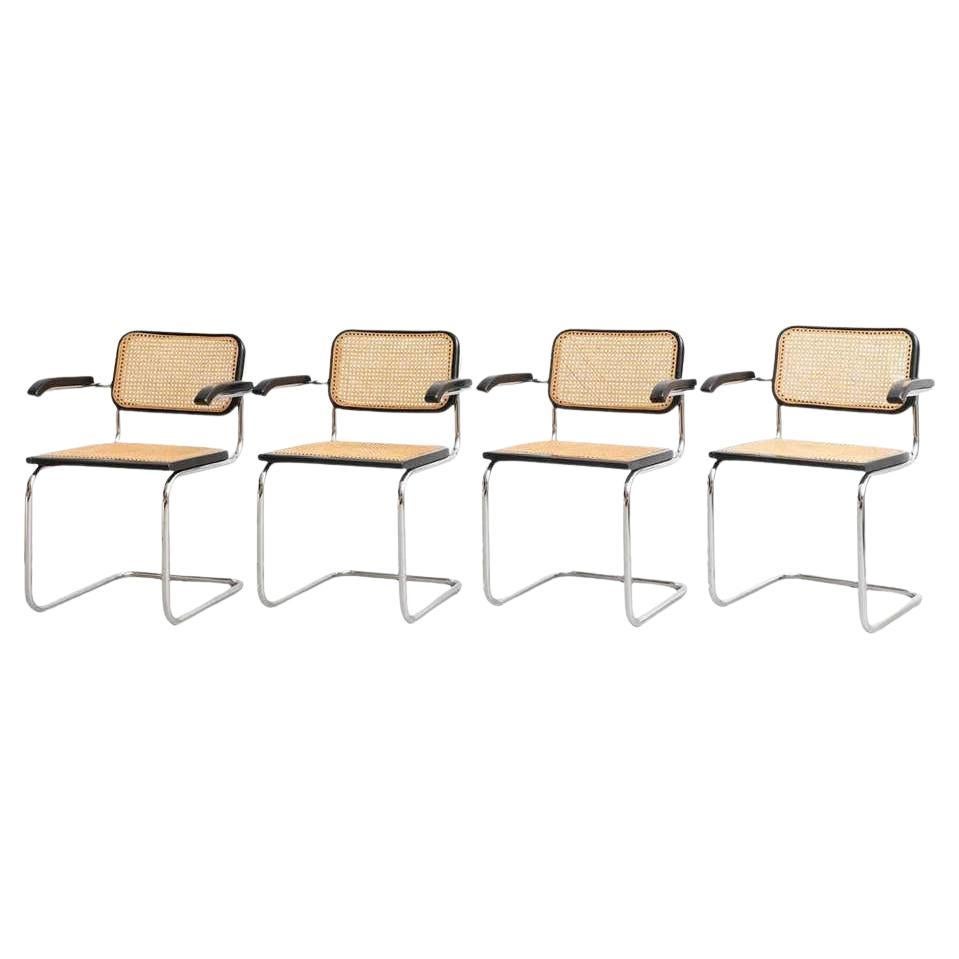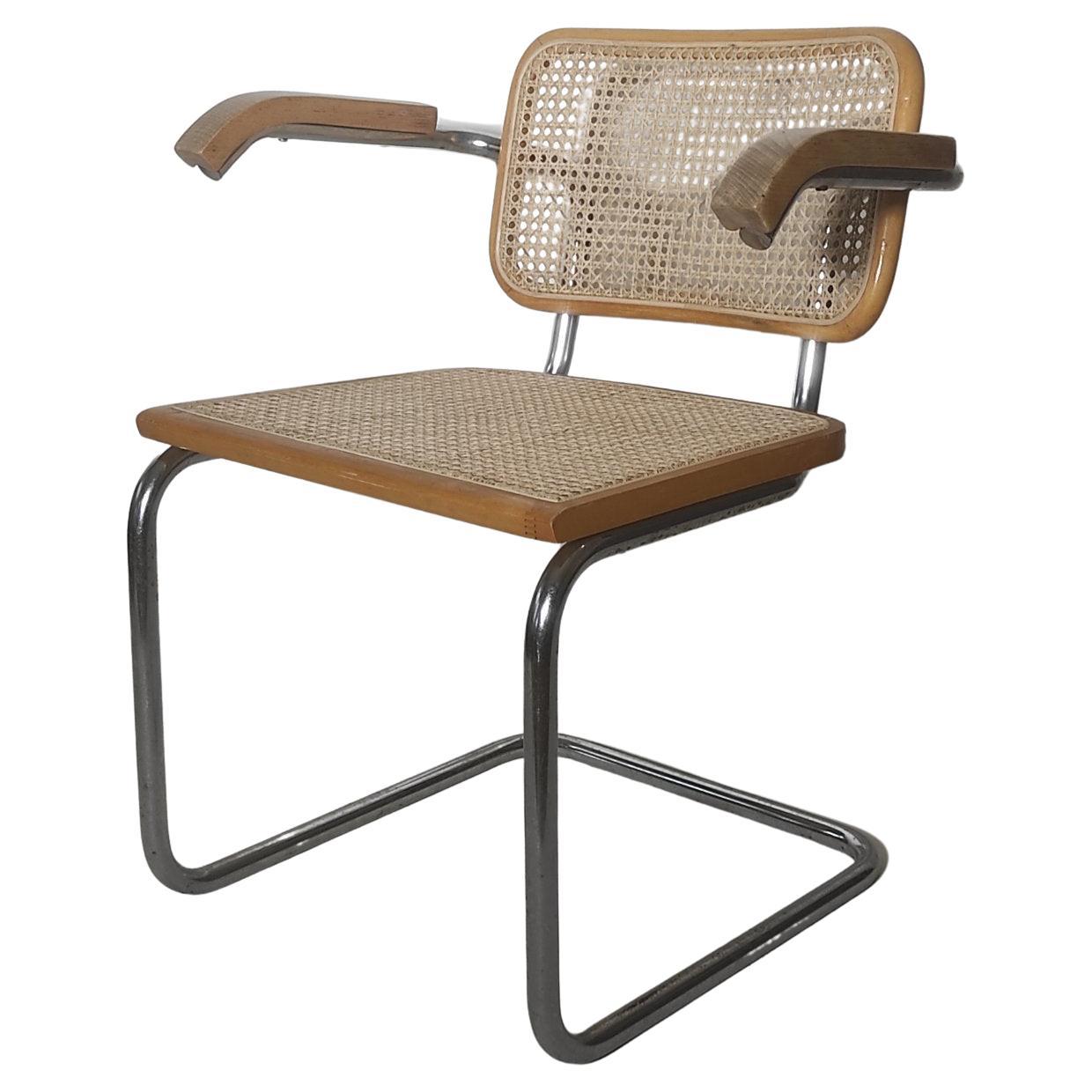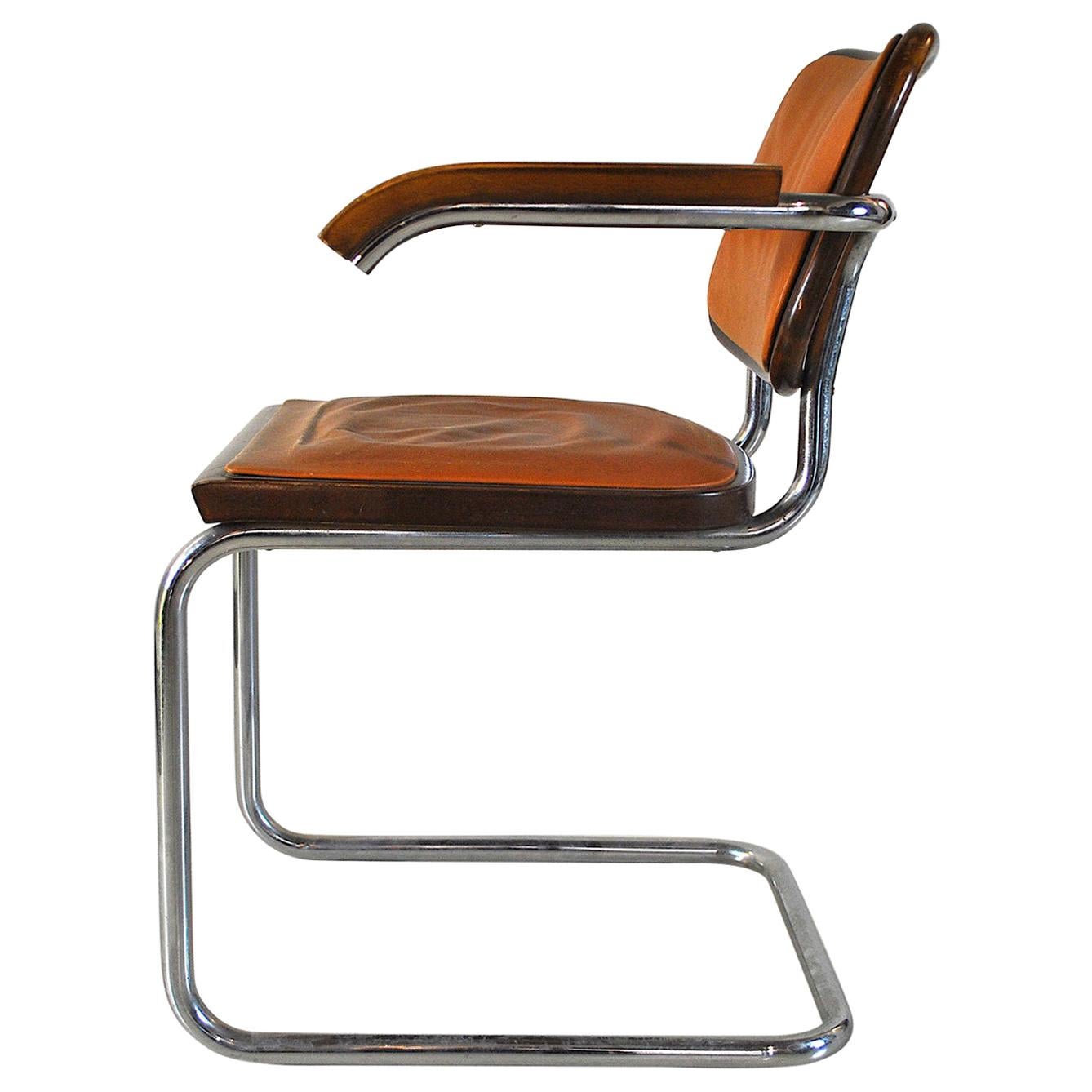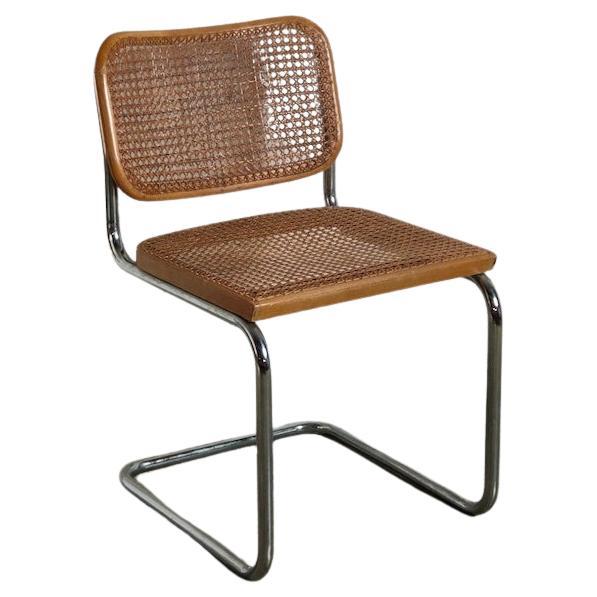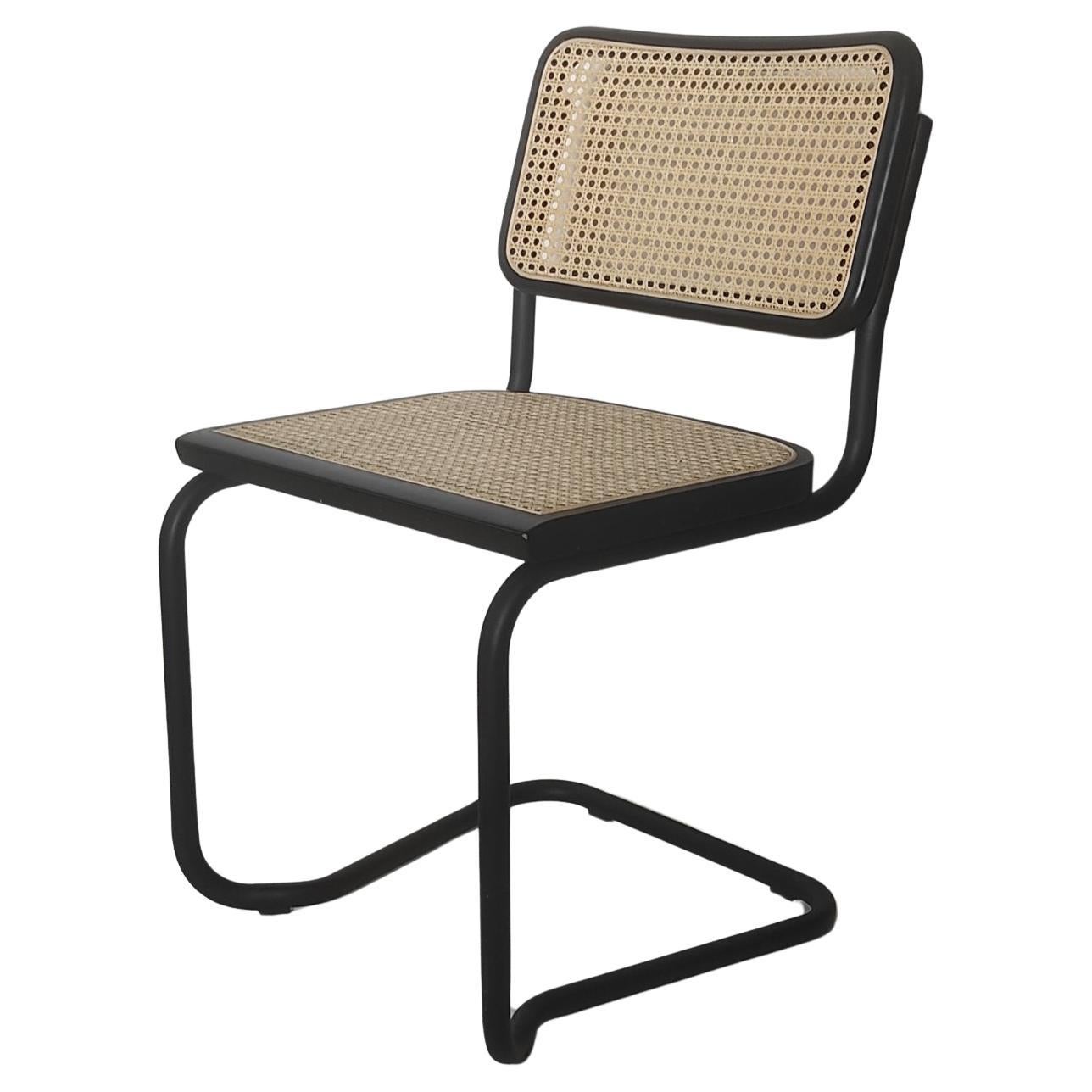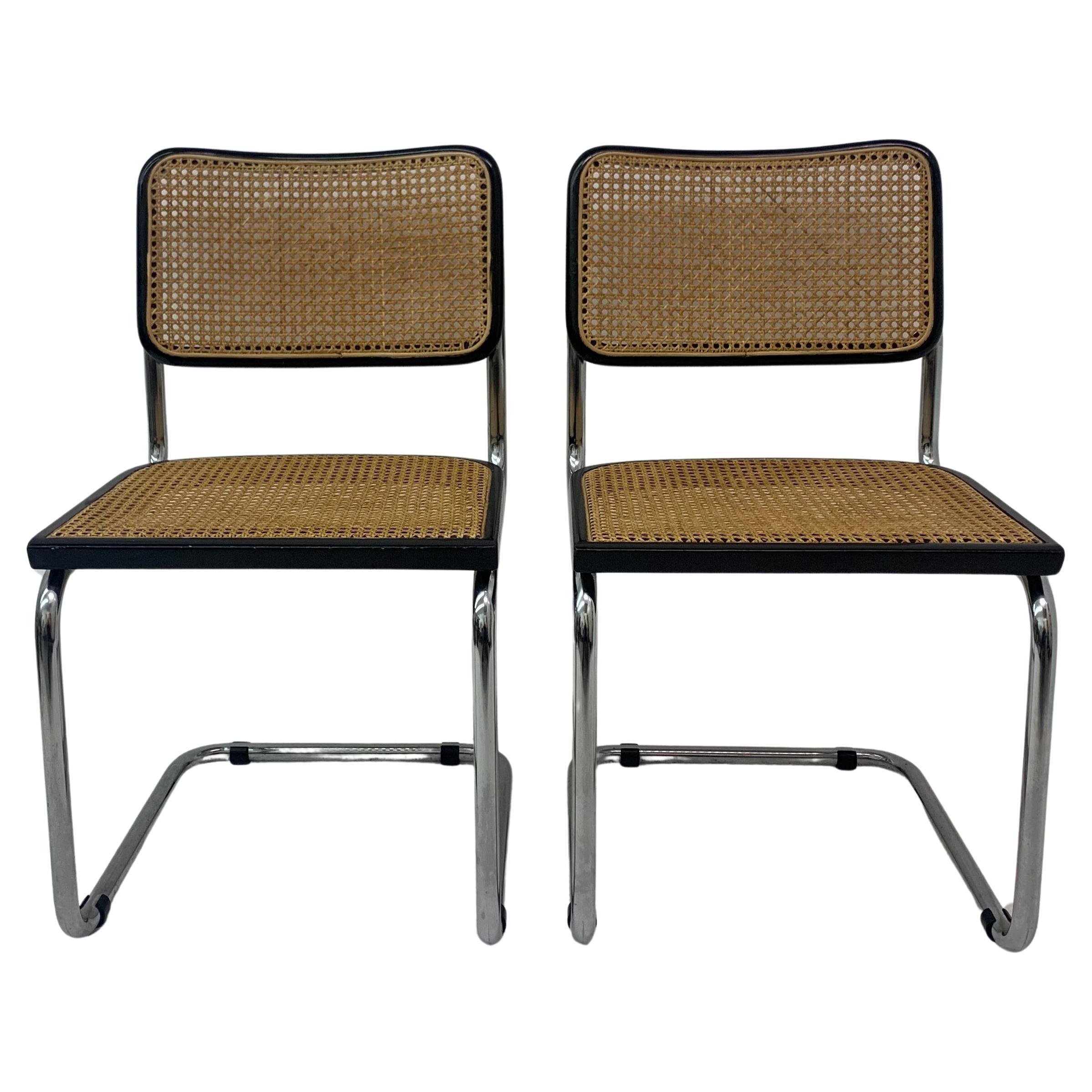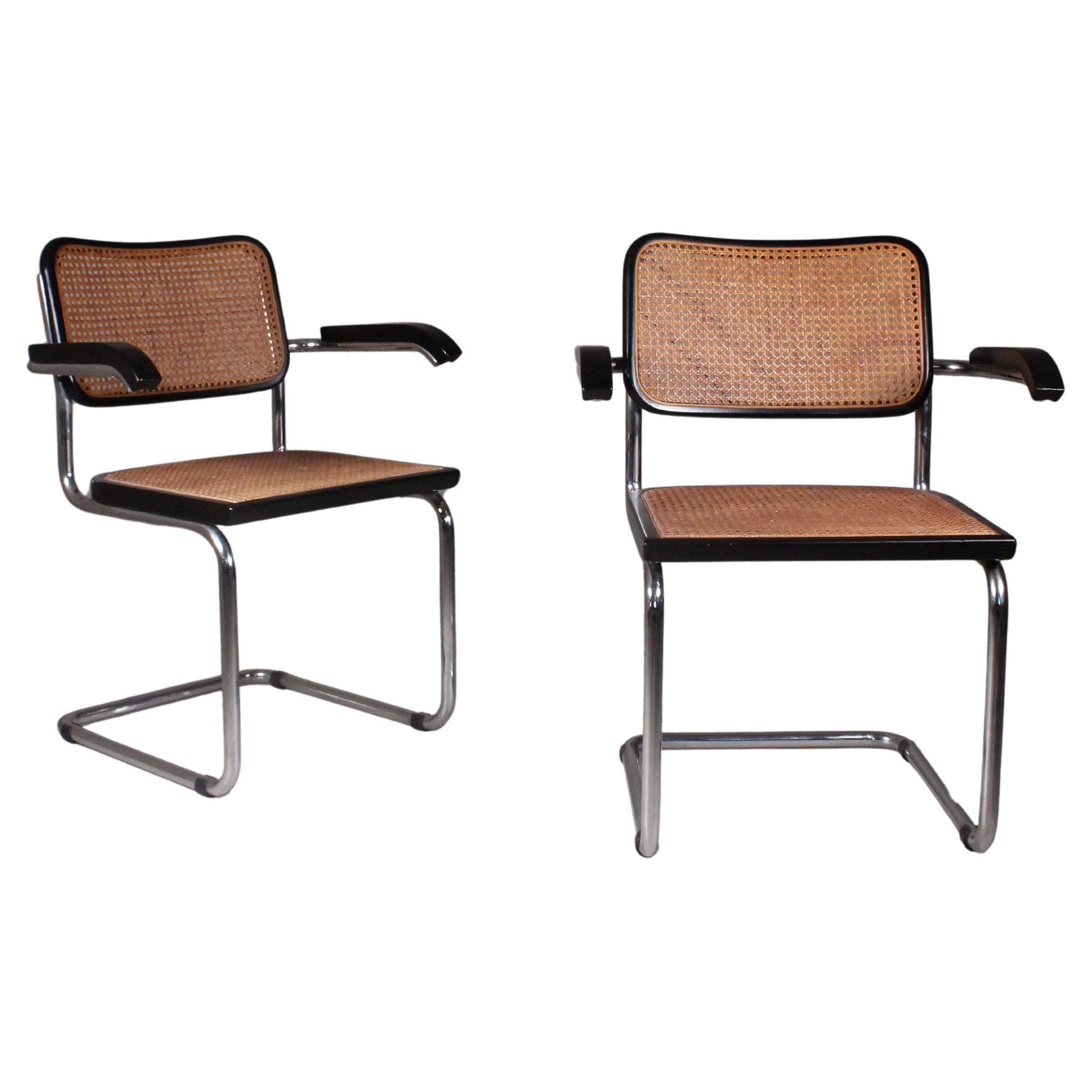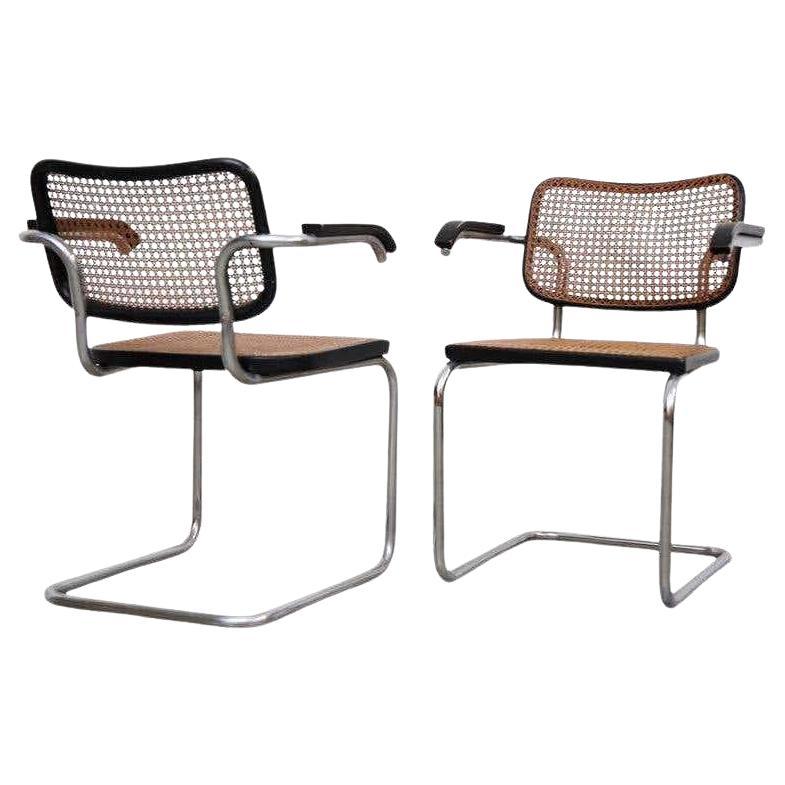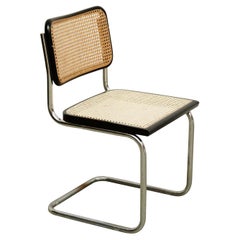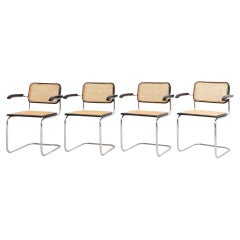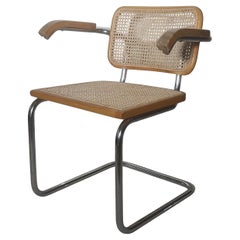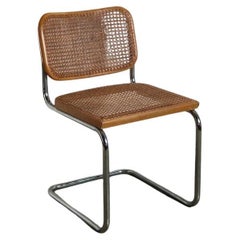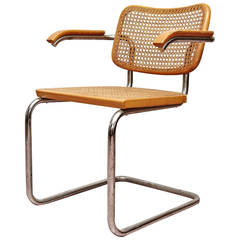
Marcel Breuer Cesca Chair, circa 1950
View Similar Items
Marcel Breuer Cesca Chair, circa 1950
About the Item
- Creator:Marcel Breuer (Designer)
- Dimensions:Height: 31.89 in (81 cm)Width: 23.23 in (59 cm)Depth: 20.87 in (53 cm)Seat Height: 17.33 in (44 cm)
- Style:Mid-Century Modern (In the Style Of)
- Materials and Techniques:
- Place of Origin:
- Period:
- Date of Manufacture:circa 1970
- Condition:Wear consistent with age and use.
- Seller Location:Barcelona, ES
- Reference Number:1stDibs: LU142722645082
Marcel Breuer
The architect and designer Marcel Breuer was one the 20th century’s most influential and innovative adherents of modernism. A member of the Bauhaus faculty, Breuer — like such colleagues as the architects Walter Gropius and Ludwig Mies van der Rohe, and the artists and art theoreticians László Moholy-Nagy and Josef Albers — left Europe in the 1930s to champion the new design philosophy and its practice in the United States.
Born in Hungary, Breuer became a Bauhaus student in 1920 and quickly impressed Gropius, the German school’s founder, with his aptitude for furniture design. His early work was influenced by the minimalist Dutch design movement De Stijl — in particular the work of architect Gerrit Rietveld. In 1925, while he was head of the Bauhaus furniture workshop, Breuer realized his signature innovation: the use of lightweight tubular-steel frames for chairs, tables and sofas — a technique soon adopted by Mies and others. Breuer’s attention gradually shifted from design to architecture, and, at the urging of Gropius, he joined his mentor in 1937 on the faculty of Harvard and in an architectural practice.
In the 1940s, Breuer opened his own architectural office, and there his style evolved from geometric, glass-walled structures toward a kind of hybrid architecture — seen in numerous Breuer houses in New England — that pairs bases of local fieldstone with sleek, wood-framed modernist upper floors. In his later, larger commissions, Breuer worked chiefly with reinforced concrete and stone, as seen in his best-known design, the brutalist inverted ziggurat built in New York in 1966 as the home of the Whitney Museum of American Art.
Breuer’s most famous furniture pieces are those made of tubular steel, which include the Wassily chair — named after Wassily Kandinsky and recognizable for its leather-strap seating supports — and the caned Cesca chair. Breuer also made several notable designs in molded plywood, including a chaise and nesting table for the British firm Isokon and a student furniture suite commissioned in 1938 for a dormitory at Bryn Mawr College. Whether in metal or wood, Breuer’s design objects are elegant and adaptable examples of classic modernist design — useful and appropriate in any environment.
Find vintage Marcel Breuer seating, storage cabinets and lighting on 1stDibs.
- Marcel Breuer Cesca Chair, circa 1980By Marcel BreuerLocated in Barcelona, BarcelonaChair, model Cesca, designed by Marcel Breuer around 1970, manufactured in Italy. Metal pipe frame, wood seat and back structure and rattan. In good condition, with minor wear c...Category
Vintage 1980s Italian Mid-Century Modern Chairs
MaterialsChrome
- Pair of Marcel Breuer Cesca Chairs, circa 1960By Marcel BreuerLocated in Barcelona, BarcelonaSet of two chairs, model Cesca, designed by Marcel Breuer circa 1960, by unknown manufacturer. Metal pipe frame, wood seat and back structure and rattan. In good condition, with ...Category
Vintage 1960s Italian Mid-Century Modern Chairs
MaterialsMetal
- Set of 4 Marcel Breuer Cesca Armchairs by Gavina, circa 1960By Marcel BreuerLocated in Barcelona, BarcelonaSet of 4 Cesca chairs, designed by Marcel Breuer. Manufactured in Italy, circa 1960 by Unknown manufacturer. Metal pipe frame, wood seat an...Category
Vintage 1960s Italian Mid-Century Modern Chairs
MaterialsMetal
- Pair of Marcel Breuer B64 Design Cesca Chairs by Gavina, circa 1960By Marcel BreuerLocated in Barcelona, BarcelonaChairs, model Cesca, designed by Marcel Breuer. Manufactured in Italy around 1960 by Gavina manufacturer. Metal pipe frame, wood seat and back structure and rattan. In good or...Category
Vintage 1960s Italian Mid-Century Modern Chairs
MaterialsMetal
- Chair by Marcel Breuer for Gavina, circa 1960By Marcel Breuer, GavinaLocated in Barcelona, BarcelonaChair designed by Marcel Breuer, manufactured by Gavina, Italy. In original condition, with minor wear consistent with age and use, preserving a beautiful patina. Seat has a smal...Category
Vintage 1960s Spanish Mid-Century Modern Chairs
MaterialsSteel
- Set of 4 Marcel Breuer Cesca Metal and Wood Mid-Century Modern Chairs, C. 1960By Marcel BreuerLocated in Barcelona, BarcelonaThis set of four Cesca chairs, designed by Marcel Breuer, is a true testament to the iconic Bauhaus movement of the 20th century. Manufactured in Italy by an unknown manufacturer cir...Category
Vintage 1960s Italian Mid-Century Modern Chairs
MaterialsMetal
- Cesca Chair After Marcel Breuer Italy 1960sBy Marcel BreuerLocated in Čelinac, BAAfter Marcel Breuer Cesca Chair Italy 1960sCategory
Vintage 1960s Italian Mid-Century Modern Chairs
MaterialsChrome
- In a Style Marcel Breuer Chair Model CescaBy Marcel BreuerLocated in bari, ITChair in the style model Cesca S64 by Marcel Breuer from 1960s in wood and oven skin.Category
Vintage 1960s Italian Bauhaus Chairs
MaterialsAnimal Skin, Walnut
- Cesca chair by Marcel Breuer for Gavina 1960sBy Marcel Breuer, GavinaLocated in Padova, ITIn the Cesca chair by Marcel Lajos Breuer for Gavina you can find the top of Made in Italy quality. This work by the austrian designer presents a m...Category
Vintage 1960s Italian Mid-Century Modern Chairs
MaterialsMetal
- Black Cesca Chair Affter Marcel Breuer Italy 1980sBy Marcel BreuerLocated in Čelinac, BAStyle of Marcel Breuer Black Cesca Chair Italy 1980sCategory
Vintage 1980s Italian Mid-Century Modern Chairs
MaterialsMetal
- Set of 2 Marcel Breuer Cesca dining chair , 1970’sBy Marcel BreuerLocated in Delft, NLDimensions: 83,5cmH, 50cmD, 46,5cmW, 46cm H seat Period: 1970’s Condition: Metal, webbing , wood Origin: ItalyCategory
Vintage 1970s Dutch Mid-Century Modern Chairs
MaterialsMetal
- Set of 2 Chairs Cesca, Marcel Breuer, Gavina, 1970By Gavina, Marcel BreuerLocated in Milano, LombardiaSet of 2 Chairs Cesca, Marcel Breuer, Gavina, 1970. The Set of 2 Cesca Chairs, designed by Marcel Breuer in 1970 for Gavina, epitomizes modernist elegan...Category
Vintage 1970s Italian Mid-Century Modern Chairs
MaterialsMetal
